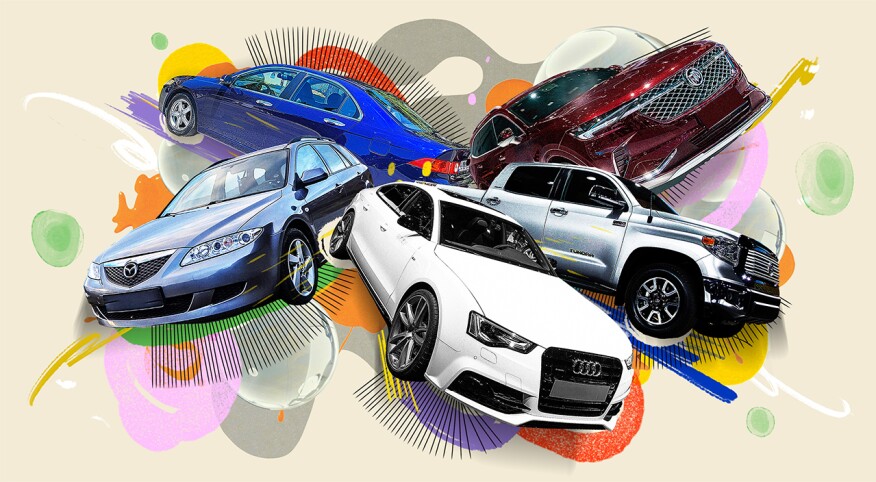With the average price of a new car costing nearly $50,000, going the used route for your next auto probably seems like the smartest option. The only problem is, it’s officially the worst time in history to buy a used car.
“With the semiconductor shortage and other supply chain shortages, and with interest rates going up, used cars are more expensive than ever,” says Benjamin Preston, an automotive reporter for Consumer Reports.
According to recent data, Preston says, “Used-car prices, when compared with February of 2020 — which was the last ‘normal’ month before the pandemic — are up nearly 50 percent.”
But used vehicles are still a good play, if you buy wisely. Cars are significantly more reliable than they were even 20 years ago. In fact, they’re generally so durable that the average car on American roads is now over 12 years old. So you can go with autos that predate your 40s and have seen more miles than your frequent-flier account.
“If you get out of the one-, two- or three-year-old range and into the five-to-10-year-old range, there are deals,” Preston says.
Of course, the used cars to look for are the ones that work most consistently. So when considering vehicles produced before the first smartphone, how do you choose?
Consumer Reports can help here, too. Using the hundreds of thousands of responses to its detailed usability and reliability surveys, the magazine compiles an annual list of reliable pre-owned cars by year, make and model.
The top picks fall into predictable buckets. “Certain models or brands that have a better reputation for reliability have those reputations for a reason,” Preston says.
But though some models repeat within the Consumer Reports lists over various model years and price points, that doesn’t guarantee that these vehicles can be trusted universally throughout their run.
“Our data shows differences from year to year — maybe a car had a recall that year or was transitioning to a new technology that didn’t quite work,” Preston says.
And even if you have a particular type of car in mind, you may want to steer in a different direction. “There are generally better deals available on used sedans and smaller cars than SUVs and pickups, because everyone wants SUVs and pickups these days,” Preston observes. You may score a newer, lower-mileage four-door or hatchback for the price of an older, higher-mileage truck or sport-ute.
We took CR’s long list and glossed on our own expertise, seeking cars that provide functionality plus. We’ve winnowed the selections down to five picks per price point, making sure to include a range of body styles. There are even some electric models and hybrids.
With any of these choices, Preston recommends a pre-purchase once-over at a reputable mechanic. “If the seller doesn’t want to let you take the car for an inspection, you should probably shop elsewhere,” he says.
Under $5,000
- 2005 Toyota Corolla
- 2005 Toyota Prius
- 2004 Honda Accord
- 2002–04 Toyota Avalon
- 2004–05 Honda Pilot
Under $10,000
- 2012–13 Mazda3
- 2012 Mazda6/Wagon
- 2013, 2015–16 Nissan Leaf
- 2012 Toyota Corolla
- 2012–13 Toyota Prius C
$15,000-$20,000
- 2014–16 Buick LaCrosse
- 2012–13 Mazda MX-5 Miata
- 2014–15 Toyota Sienna
- 2016 Mazda CX-5
- 2012–13 Toyota Tundra
$20,000–$25,000
- 2016-17 Acura TLX
- 2015 Audi A5
- 2018 Subaru Crosstrek
- 2014-15 Lexus RX
- 2016 Toyota Tacoma
$30,000–$40,000
- 2021 Subaru Legacy
- 2021 Toyota Prius Prime
- 2014-15 Lexus LS
- 2021 Buick Envision
- 2017-19 Toyota 4Runner






